Refine search
Actions for selected content:
10306 results in History of science: general interest
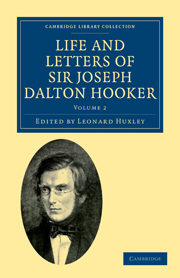
Life and Letters of Sir Joseph Dalton Hooker O.M., G.C.S.I.
-
- Published online:
- 07 October 2011
- Print publication:
- 01 May 2011
- First published in:
- 1918
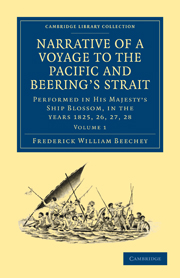
Narrative of a Voyage to the Pacific and Beering's Strait
- To Co-operate with the Polar Expeditions: Performed in His Majesty's Ship Blossom, under the Command of Captain F. W. Beechey in the Years 1825, 26, 27, 28
-
- Published online:
- 07 October 2011
- Print publication:
- 01 May 2011
- First published in:
- 1831
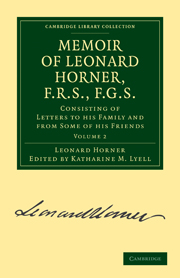
Memoir of Leonard Horner, F.R.S., F.G.S.
- Consisting of Letters to his Family and from Some of his Friends
-
- Published online:
- 07 October 2011
- Print publication:
- 19 May 2011
- First published in:
- 1890
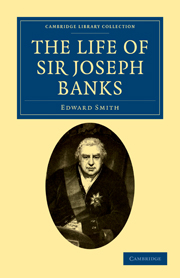
The Life of Sir Joseph Banks
- President of the Royal Society, with Some Notices of his Friends and Contemporaries
-
- Published online:
- 07 October 2011
- Print publication:
- 11 May 2011
- First published in:
- 1911

Volcanos
- The Character of Their Phenomena, Their Share in the Structure and Composition of the Surface of the Globe, and Their Relation to its Internal Forces
-
- Published online:
- 07 October 2011
- Print publication:
- 09 June 2011
- First published in:
- 1862
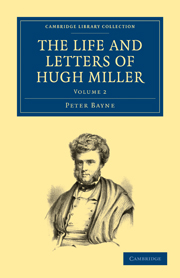
The Life and Letters of Hugh Miller
-
- Published online:
- 07 October 2011
- Print publication:
- 02 June 2011
- First published in:
- 1871

A Geological Manual
-
- Published online:
- 07 October 2011
- Print publication:
- 19 May 2011
- First published in:
- 1833
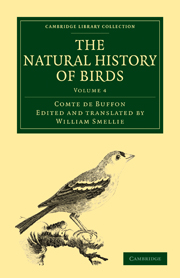
The Natural History of Birds
- From the French of the Count de Buffon; Illustrated with Engravings, and a Preface, Notes, and Additions, by the Translator
-
- Published online:
- 07 October 2011
- Print publication:
- 25 November 2010
- First published in:
- 1793

The Natural History of Birds
- From the French of the Count de Buffon; Illustrated with Engravings, and a Preface, Notes, and Additions, by the Translator
-
- Published online:
- 07 October 2011
- Print publication:
- 25 November 2010
- First published in:
- 1793
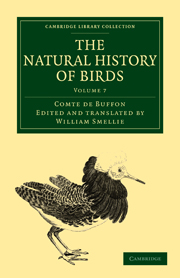
The Natural History of Birds
- From the French of the Count de Buffon; Illustrated with Engravings, and a Preface, Notes, and Additions, by the Translator
-
- Published online:
- 07 October 2011
- Print publication:
- 25 November 2010
- First published in:
- 1793
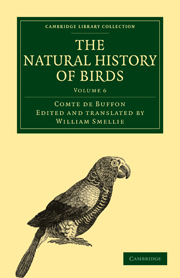
The Natural History of Birds
- From the French of the Count de Buffon; Illustrated with Engravings, and a Preface, Notes, and Additions, by the Translator
-
- Published online:
- 07 October 2011
- Print publication:
- 25 November 2010
- First published in:
- 1793

The Natural History of Birds
- From the French of the Count de Buffon; Illustrated with Engravings, and a Preface, Notes, and Additions, by the Translator
-
- Published online:
- 07 October 2011
- Print publication:
- 25 November 2010
- First published in:
- 1793

The Natural History of Birds
- From the French of the Count de Buffon; Illustrated with Engravings, and a Preface, Notes, and Additions, by the Translator
-
- Published online:
- 07 October 2011
- Print publication:
- 25 November 2010
- First published in:
- 1793
Contents
-
- Book:
- A Voyage Through Turbulence
- Published online:
- 07 October 2011
- Print publication:
- 08 September 2011, pp v-viii
-
- Chapter
- Export citation
2 - Prandtl and the Göttingen school
-
-
- Book:
- A Voyage Through Turbulence
- Published online:
- 07 October 2011
- Print publication:
- 08 September 2011, pp 40-100
-
- Chapter
- Export citation
13 - Epilogue: a turbulence timeline
-
-
- Book:
- A Voyage Through Turbulence
- Published online:
- 07 October 2011
- Print publication:
- 08 September 2011, pp 426-434
-
- Chapter
- Export citation
List of contributors
-
- Book:
- A Voyage Through Turbulence
- Published online:
- 07 October 2011
- Print publication:
- 08 September 2011, pp ix-x
-
- Chapter
- Export citation
4 - G.I. Taylor: the inspiration behind the Cambridge school
-
-
- Book:
- A Voyage Through Turbulence
- Published online:
- 07 October 2011
- Print publication:
- 08 September 2011, pp 127-186
-
- Chapter
- Export citation
11 - Satish Dhawan
-
-
- Book:
- A Voyage Through Turbulence
- Published online:
- 07 October 2011
- Print publication:
- 08 September 2011, pp 373-392
-
- Chapter
- Export citation
Frontmatter
-
- Book:
- A Voyage Through Turbulence
- Published online:
- 07 October 2011
- Print publication:
- 08 September 2011, pp i-iv
-
- Chapter
- Export citation
